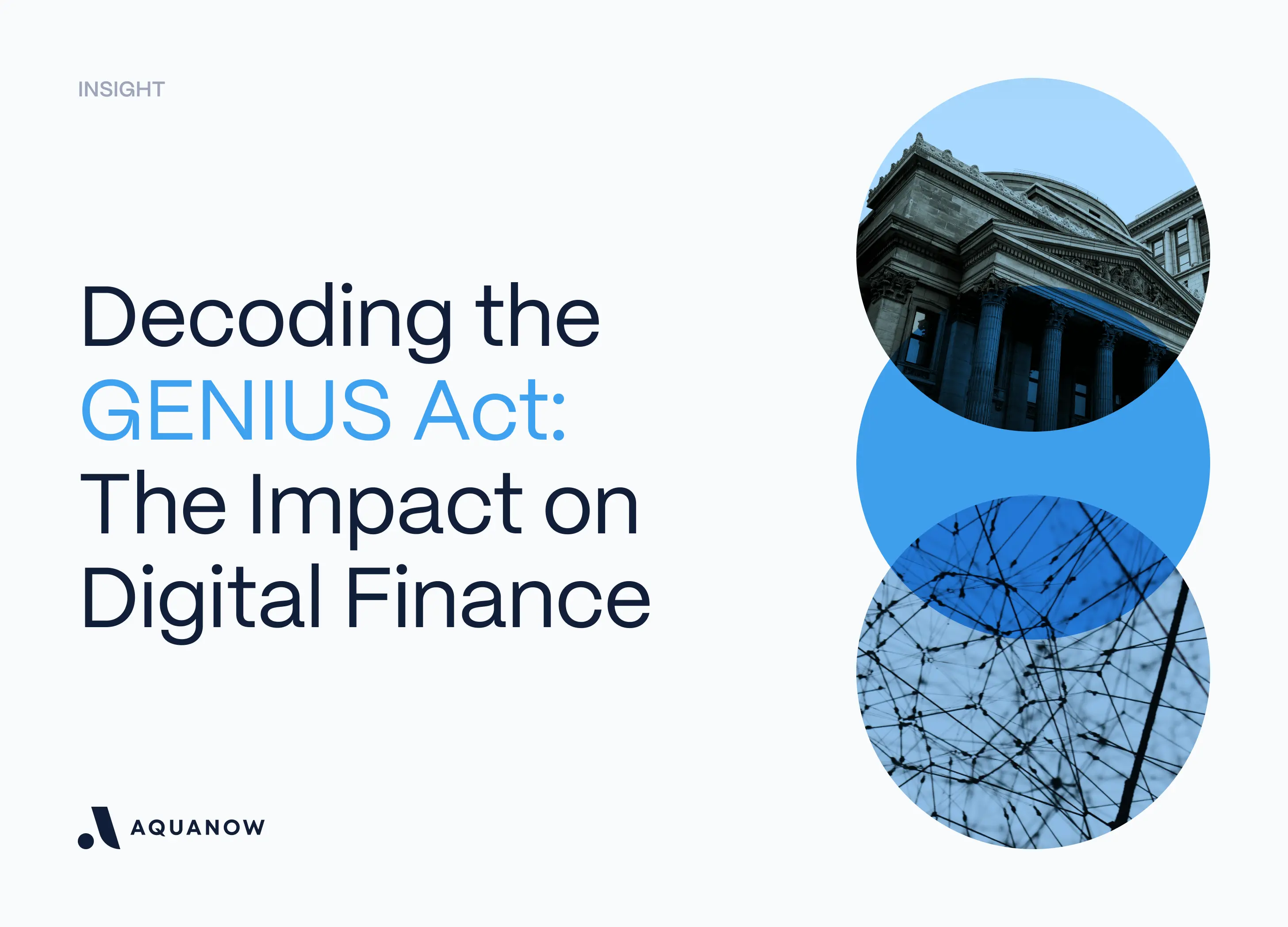On July 18, 2025, the GENIUS Act (Growing and Empowering New Innovation in U.S. Stablecoins) officially became law. Following bipartisan passage - 68–30 in the Senate on June 17 and 308–122 in the House on July 17 - President Trump signed the bill, establishing the first dedicated federal framework for U.S. dollar-denominated payment stablecoins. This marks a watershed moment for the digital asset industry, moving beyond proposals and into enforceable regulation that blends innovation with robust oversight. Instead of categorizing stablecoins under securities or commodities law, or relying on patchwork state regimes, this legislation introduces a dedicated federal framework tailored to the nature of payment stablecoins. Its approach is pragmatic: promote innovation in U.S. dollar-denominated stablecoins while establishing robust protections around reserves, issuance, and operational transparency.
At a time when the global regulatory landscape is rapidly evolving, the GENIUS Act signals a more measured and coordinated effort to integrate stablecoins into the broader financial system - safely and at scale.
Designing Policy for a Digital Dollar Future
The Act treats payment stablecoins as a distinct category of financial instrument. It mandates 1:1 backing with high-quality liquid assets, permits issuance only by regulated banks or licensed non-bank entities, and requires clear disclosures about reserve holdings and redemption practices. It also sets standards for interoperability and infrastructure, enabling a more consistent and secure digital dollar ecosystem.
Importantly, the legislation introduces joint state and federal oversight, closing regulatory gaps that have, until now, allowed loosely governed issuers to operate at scale. In doing so, the Act could provide institutions with the clarity needed to enter the stablecoin space with greater confidence.
Contextualizing the U.S. Approach
The GENIUS Act departs from earlier U.S. efforts that treated stablecoins as securities or subsumed them under broad crypto regulation. Instead, it introduces a unified federal framework tailored specifically to payment stablecoins, focusing on issuance, 1:1 reserves, and oversight.
Compared to international peers like the EU’s MiCA - which governs a wide range of digital assets - the GENIUS Act’s narrower scope may allow for faster implementation and clearer operational standards, particularly for U.S. dollar-denominated tokens.
In the UAE, regulators such as ADGM and VARA have taken a progressive but measured approach, enabling stablecoin issuance under licensing regimes that emphasize compliance and risk-based supervision. Their emphasis on proportionality based on use case aligns with the GENIUS Act’s differentiated treatment of payment tokens.
Unlocking Institutional Adoption
The immediate impact of the GENIUS Act is regulatory certainty. Financial institutions that have been cautious due to ambiguous rules may now revisit stablecoin applications for settlement, treasury, and cross-border payments. By enforcing full-reserve backing and issuer licensing, the Act introduces safeguards that could make stablecoins viable for large-scale use in enterprise environments.
Over time, the legislation could support broader goals such as the development of tokenized markets, programmable finance, and real-time payments infrastructure - advancing the modernization of financial services while preserving the stability of the U.S. dollar.
That said, industry stakeholders have highlighted areas that may warrant further attention. These include the potential for liquidity pressure in the event of large-scale redemptions from Treasury-backed reserves, the absence of certain investor protections typically available under securities law, and the implications of embedding privately issued stablecoins into core financial infrastructure. Others have noted that the political context surrounding the bill could complicate bipartisan alignment over time.
While these considerations are valid and should be addressed through thoughtful implementation, they do not detract from the Act’s overall significance in establishing a structured and credible foundation for stablecoin adoption at scale.
As Rob Catalanello, Chief Commercial Officer at Aquanow, notes:
By establishing clear guardrails for stablecoins, the GENIUS Act transforms blockchain from a promising technology into a practical engine for innovation. It will help drive efficiency and modernize financial services, from payments to the most complex derivatives, while at the same time unlocking new potential across industries.
The market reaction has been significant: the global crypto market cap briefly exceeded $4 trillion following the signing, with Ethereum rallying over 20% and Bitcoin reaching new highs. Analysts estimate that mandated Treasury-backed reserves could generate up to $1 trillion in additional demand for U.S. short-term debt over the next three years. Meanwhile, major banks and corporates - including Bank of America, Citigroup, Amazon, and Walmart - are exploring compliant stablecoin issuance under the new regime.
While the opportunity is clear, execution will require careful planning: selecting blockchain infrastructure, embedding AML/KYC processes, and ensuring systems can scale to enterprise-level volumes.
Foundations for the Next Phase
While there’s still room for refinement, the GENIUS Act represents a thoughtful evolution in digital asset regulation. It avoids overreach, limits systemic risk, and acknowledges both the promise and pitfalls of integrating stablecoins into the U.S. financial system.
By establishing a workable set of rules, the Act gives policymakers, institutions, and infrastructure providers a foundation on which to build. Whether as a tool for financial innovation or a bridge to more advanced blockchain applications, payment stablecoins are here to stay - and the GENIUS Act is a serious first step in regulating them accordingly.





